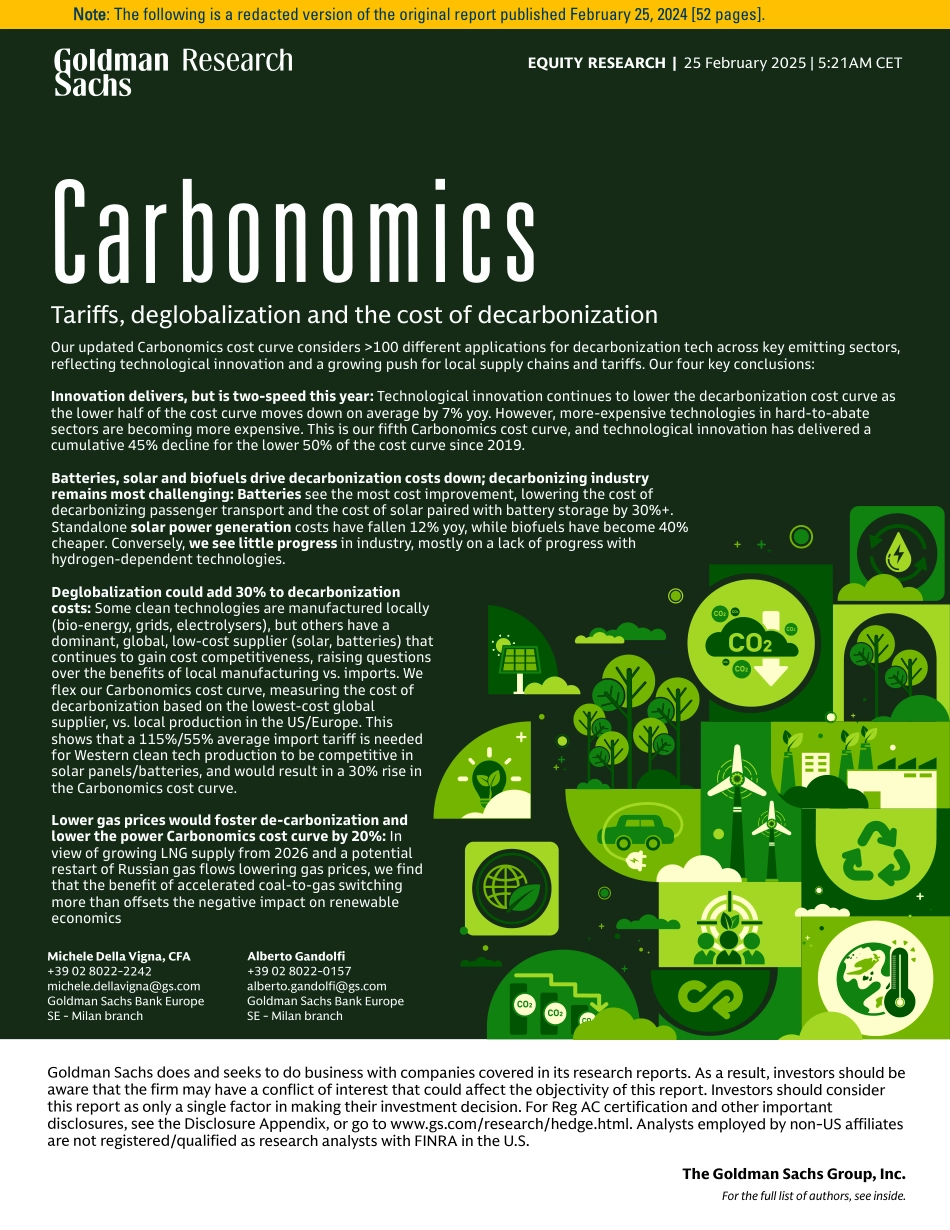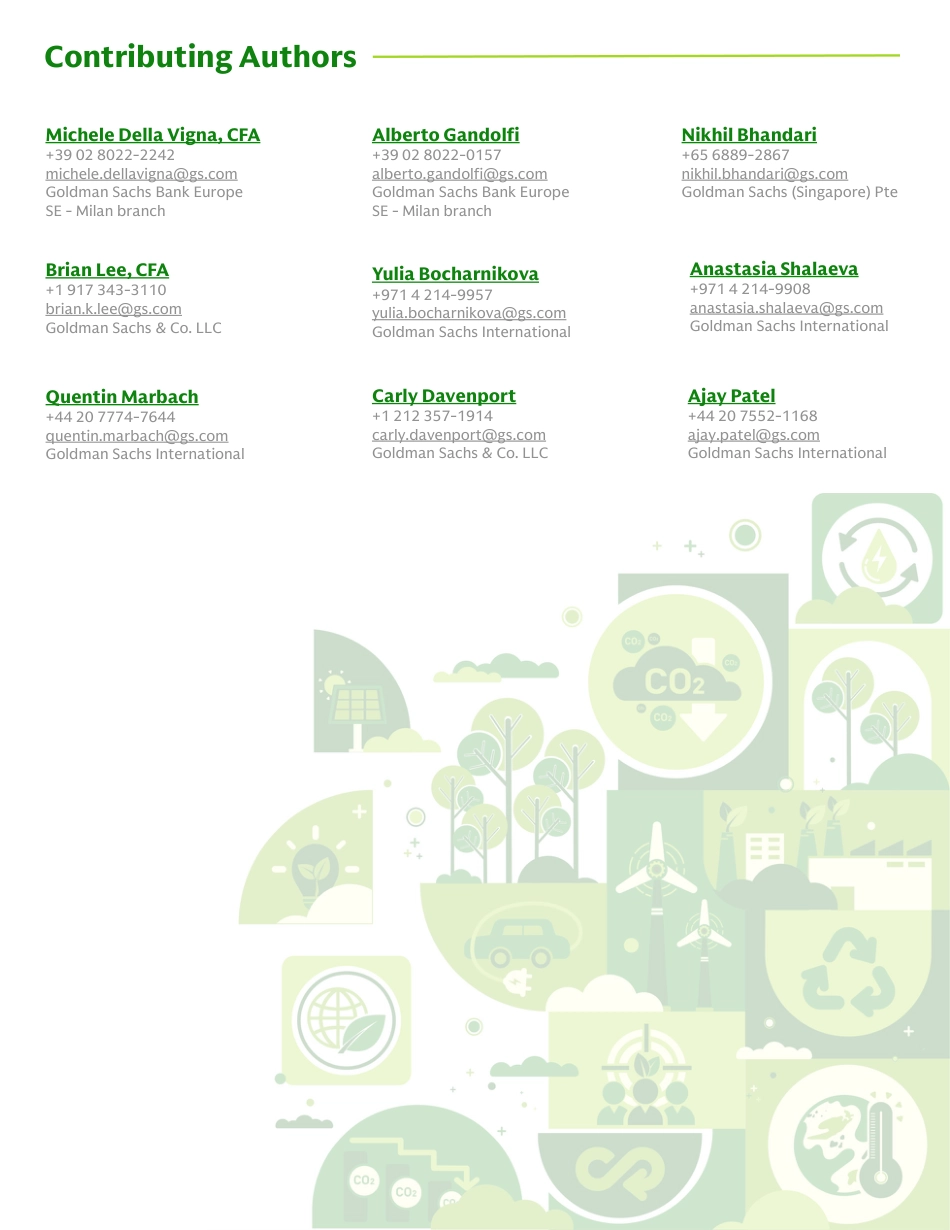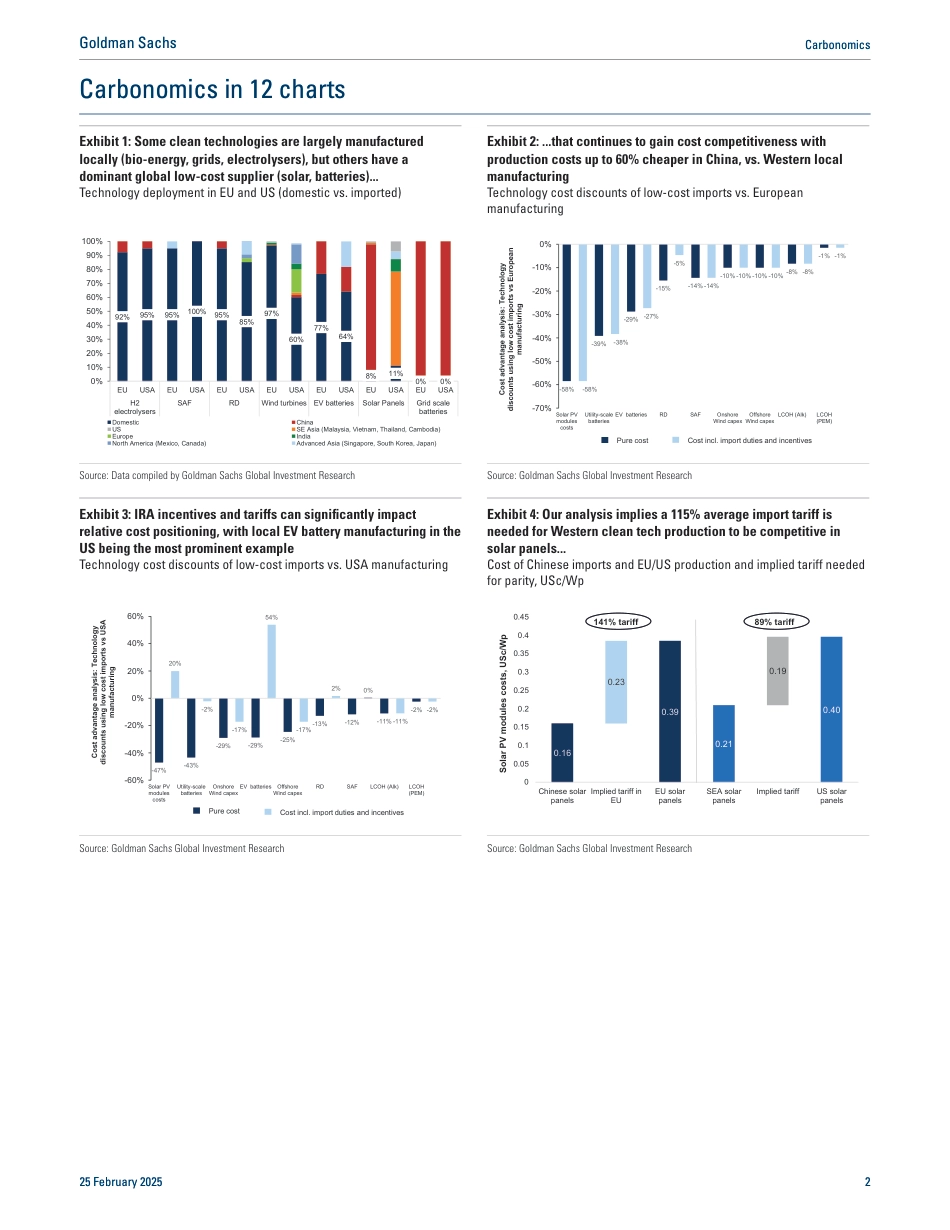Michele Della Vigna, CFA +39 02 8022-2242michele.dellavigna@gs.com Goldman Sachs Bank Europe SE - Milan branch EQUITY RESEARCH | 25 February 2025 | 5:21AM CETTariffs, deglobalization and the cost of decarbonizationCarbonomicsAlberto Gandolfi +39 02 8022-0157alberto.gandolfi@gs.comGoldman Sachs Bank Europe SE - Milan branchOur updated Carbonomics cost curve considers >100 different applications for decarbonization tech across key emitting sectors, reflecting technological innovation and a growing push for local supply chains and tariffs. Our four key conclusions: Innovation delivers, but is two-speed this year: Technological innovation continues to lower the decarbonization cost curve as the lower half of the cost curve moves down on average by 7% yoy. However, more-expensive technologies in hard-to-abate sectors are becoming more expensive. This is our fifth Carbonomics cost curve, and technological innovation has delivered a cumulative 45% decline for the lower 50% of the cost curve since 2019. Batteries, solar and biofuels drive decarbonization costs down; decarbonizing industry remains most challenging: Batteries see the most cost improvement, lowering the cost of decarbonizing passenger transport and the cost of solar paired with battery storage by 30%+. Standalone solar power generation costs have fallen 12% yoy, while biofuels have become 40% cheaper. Conversely, we see little progress in industry, mostly on a lack of progress with hydrogen-dependent technologies. Deglobalization could add 30% to decarbonization costs: Some clean technologies are manufactured locally (bio-energy, grids, electrolysers), but others have a dominant, global, low-cost supplier (solar, batteries) that continues to gain cost competitiveness, rai...



